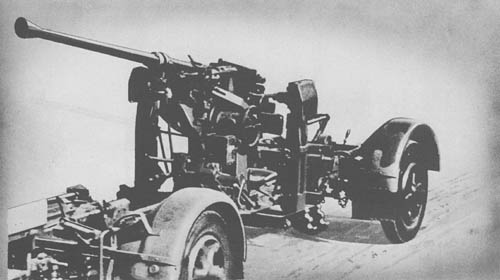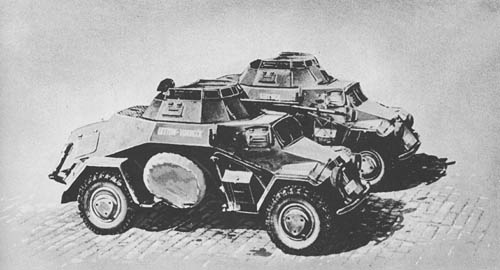
There are three main types of German four-wheeled armored car, the Sd. Kfz. 221, 222, and 223, of which the 222 is the most common. The main differences between the types are in weight, armament, and turret construction.
Sd. Kfz. 222—Weighs 4.7 tons and has a crew of three. Its turret of 8 mm thick plates, set at a 55° angle to the horizontal, is ten-sided and traversable through 360°. The roof is fitted with two hinged frameworks covered with wire mesh which, in a closed position, form a bird-cage cover as a protection against grenades and as a framework for camouflage.
The four wheels are independently sprung. Power is furnished by an Auto-Union, Horch V-8 gasoline engine developing 85 B.H.P. at 2,000 r.p.m. The transmission is of the crash type, providing five forward speeds and one reverse. The drive is through all wheels and steering may be either two-wheeled or four-wheeled as desired.
A 2 cm Kw.K. 30 or 38 is mounted on a central pillar, together with a coaxial 7.92 mm M.G. 34 to the left. The car has a W/T transmitter and receiver with a radius of about 4 1/2 miles.
Sd. Kfz. 221—Similar to Sd. Kfz. 222. Weighs 4 tons and has a crew of two. Its turret is a seven-sided truncated pyramid with a wire-mesh grid over the fore part only. It mounts only an M.G. 34, although a machine carbine M.P. 38 or 40 is carried as auxiliary armament. It has no wireless.
Sd. Kfz. 223—Similar to Sd. Kfz. 222. Weighs 4.3 tons and has a crew of three. It mounts the 7.92 mm M.G. 34 as main armament, and carries a machine carbine M.P. 38 or 40. It has W/T and R/T communication. A horizontal rectangular aerial is supported above the car on four uprights which can be folded downward and backward, giving the gunner a clear field of fire.
SPECIFICATIONS
| Sd. Kfz. 222 | ||
| Weight | 4.7 tons | |
| Length | 15 ft., 9 ins. | |
| Width | 6 ft., 5 ins. | |
| Height | 6 ft., 7 ins. | |
| Ground clearance | 10 ins. | |
| Suspension | 4 single wheels, independent springing | |
| Wheel base | 9 ft., 2 ins. | |
| Size tires | 8.27 x 18 | |
| Fording depth | 2 ft. | |
| Theoretical radius of action | ||
| Roads | 175 miles | |
| Cross-country | 125 miles | |
| Speed | ||
| Roads | 30 m.p.h. | |
| Cross-country | 25 m.p.h. | |
| Armor | ||
| Front plate | 8 mm | |
| Sides | 8 mm | |
| Armament | 2 cm Kw.K. 30 or 38 | |
| 7.92 mm M.G. 34 (coaxial) | ||
| 9 mm M.P. 38 or 40 | ||
| Ammunition | 2 cm 100 rds. A.P., 120 rds. H.E. | |
| M.G.—2000 rds. | ||
| M.P.—350 rds. | ||
| Engine | Auto-Union, V-8, 85 B.H.P. | |
| Transmission | Crash type—5 speeds forward, 1 reverse. | |
| Steering | 2-4 wheel steer | |
| Crew | 3 | |
German: p. 41
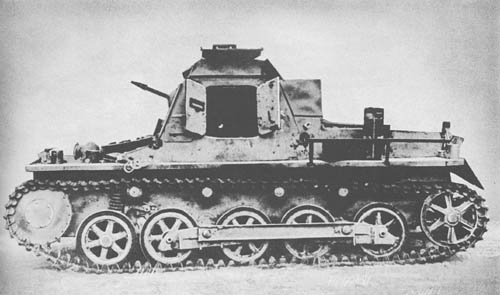
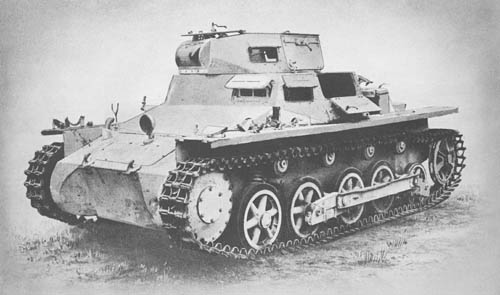
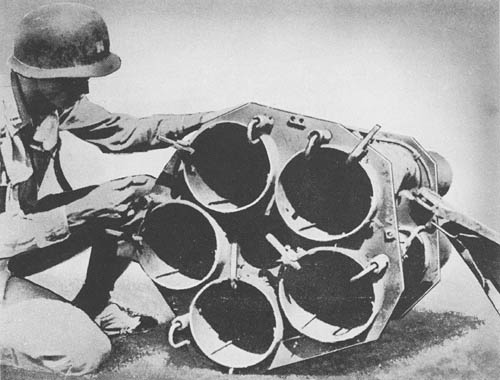
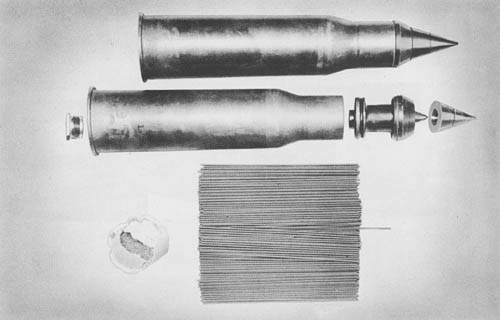
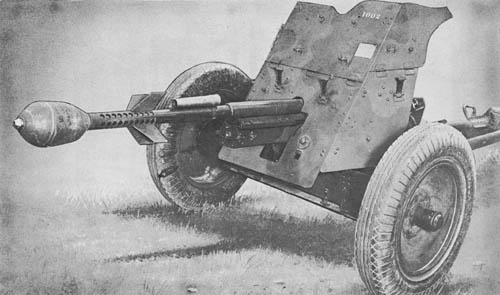
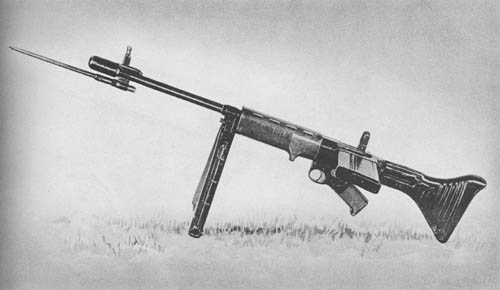
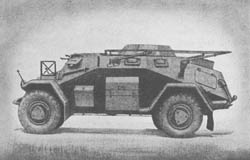 German nomenclature: leichter Panzerspähwagen (Fu.) (Sd. Kfz. 223) mit Einheitsfahrgestell I für schwerer Panzerkraftwagen.
German nomenclature: leichter Panzerspähwagen (Fu.) (Sd. Kfz. 223) mit Einheitsfahrgestell I für schwerer Panzerkraftwagen.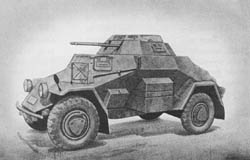 German nomenclature: leichter Panzerspähwagen (Sd. Kfz. 222) mit Einheitsfahrgestell I für schwerer Panzerkraftwagen.
German nomenclature: leichter Panzerspähwagen (Sd. Kfz. 222) mit Einheitsfahrgestell I für schwerer Panzerkraftwagen.